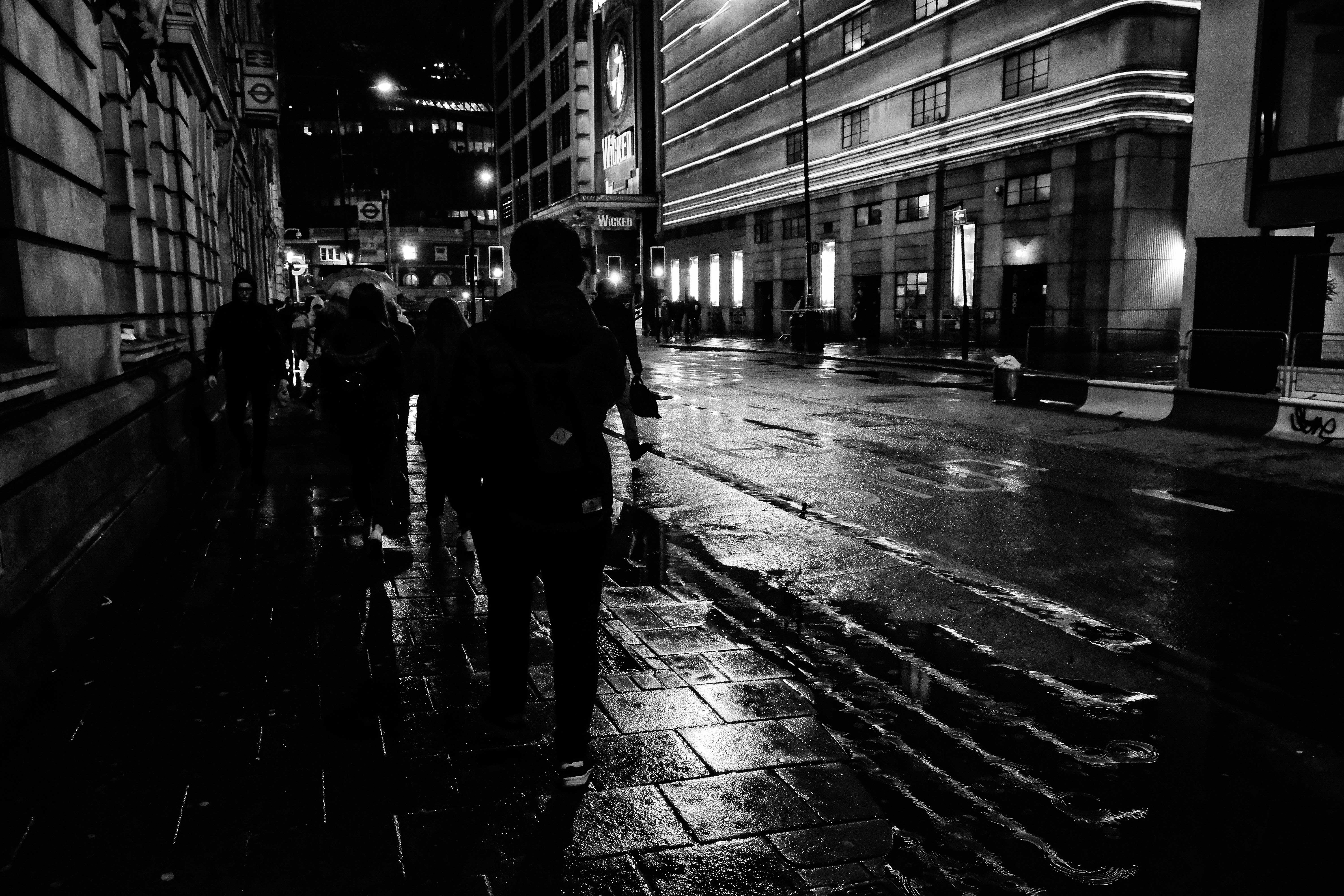
August 1, 2018, by lqxlahi
‘Look like they may be in a gang’: (Track)Suits, Work and London’s Grime Artists
Last month, a segment entitled ‘Knife and Gun Crime Epidemic’ aired on Good Morning
Britain, which centred on the rise of the police’s tactics of stop and search. Piers Morgan
waded into the debate, with an inflammatory enquiry asking ‘what is wrong with stopping
and searching young black youths who look like they may be in a gang’. Social media
erupted as a result of Morgan’s comments. Prominent London rapper, Giggs took to
Instagram. Giggs denounced Piers Morgan, questioning how Morgan knew what being in a
gang actually looked like. Giggs argued that his own son may still wear a tracksuit with a
hood but remained a good kid who was not involved in a gang. The centrality of clothing to
the debate is interesting, and above all else tracksuits and hoodies have been explicitly
associated within the media to gang membership. Just type the words ‘gang culture’ into
Google Images and a large proportion of the results showcase individuals wearing these
forms of clothing.

Skepta 2 F.I.B. 2016.jpg Català: F.I.B. 2016 Euskara: F.I.B. 2016 Date 14 July 2016
Source Own work Author Batiste Safont
However, within his post, Giggs also highlighted how he never witnessed individuals such as
Morgan ‘celebrating ‘’young black youths that look like they are in gangs’’ when we are
successful, or break records or win awards and so on’. Therefore, perhaps it’s time we
thought about these symbolic items of clothing, which make people ‘look like they are in
gangs’ more productively? In 2014, Skepta caused waves by breaking with tradition and
collected his Best Video MOBO award in a black Nike tracksuit. In 2017, he launched his own
range of tracksuits at Selfridges. As Giggs argues, it is these same forms of clothing,
tracksuits and hoodies, which are present on the bodies of young black youths as they
successfully win awards and break records. Yet like the bodies themselves, these forms of
clothing are not celebrated but instead become profiled, stigmatised, correlated to
negativity and not productivity.

Attribution-ShareAlike 2.0 Generic (CC BY-SA 2.0)
Turning to London’s grime music scene, I therefore want to highlight how the tracksuit and
the hoodie function as a style of embodiment; a new incarnation of ‘uniform’ within the
grime music scene. Grime artists choose to wear tracksuits and hoodies not to denote their
membership to a gang but instead to help develop their performance of a workplace
persona of a grime artist.
Developed as a concept to refer to service work, aesthetic labour refers to the ‘embodied
capacities and attributes possessed by workers’ which favourably appeal to consumers and
which are then mobilized, developed and commodified to aid in the workers performance of
a certain workplace persona’ (Warhurst et al., 2004). Service sector companies helped
develop their company brands by utilising the bodily and cognitive dispositions of the work,
which gained symbolic value. However, within the grime music scene, the majority of
individuals are self-employed. As a result, grime artists have to take responsibility for their
own image, cultivating and displaying the correct image of self in order to succeed within
the competitive grime music industry.
Clothing can be situated as a key ‘style of embodiment’ for workers. Pettinger (2004)
highlights how the conscious choice and wearing of certain styles of clothing is a form of
aesthetic labour, which workers may undertake to assist in their embodiment and
performance of a particular brand or image. Within the grime music scene, the embodiment
and display of different aesthetic attributes such as hoodies and tracksuits may therefore
become vital in ensuring the individual embodies a grime aesthetic and is therefore
understood and well received by their audience.
This form of aesthetic labour through clothing choice of tracksuit and trainers is intrinsic in
enabling the grime practitioner to command respect from their potential audiences through
a styled, grime embodiment. Styles of clothing such as ‘tracksuit’ and ‘trainers’ become the
vital attributes displayed by these individuals which ensure they appeal to and are therefore
respected as a grime artist by the audience.
Moreover, grime artists undertake unrelenting aesthetic labour as they need to constantly
be aware of their overall look because their next potential employment opportunity could
arise from any social space. As a result, there has been an expansion of the spaces in which
individuals feel they need to undertake aesthetic labour, beyond typical working spaces
such as the office or the study and into wider society as a whole. As a result, individuals seek
to wear tracksuits and hoodies beyond the typical working day or working spaces, as grime
has both a cultural politics but also its own aesthetic, it is not just ‘work’ for grime DJs but
all-encompassing cultural expression, aesthetics and therefore aesthetic labour matters to
grime DJs politically as well as in terms of career.
Undoubtedly, (track)suits are the new working uniforms of pioneers in London’s music
scenes. It is time people like Morgan stopped correlating these forms of clothing such as
tracksuits and trainers to gang membership. Instead, we need to recognise these clothes as
a form of workplace labour which inevitably helps the grime artist to embody their form of
work.
References:
Pettinger, L. (2004) ‘Brand Culture and Branded Workers: Service Work and Aesthetic
Labour in Fashion Retail’, Consumption Markets and Culture, 7(2), pp. 165-184.
Warhurst, C., Nickson, D., Witz, A. and Cullen, A, M. (2000) ‘Aesthetic labour in interactive
service work: some case based evidence from the ‘new’ Glasgow’, The Service Industries,
20(3), pp. 1-18.
Nina Willment is a PhD researcher at Royal Holloway, University of London
Featured image courtesy of Stephen Percival
No comments yet, fill out a comment to be the first

Leave a Reply